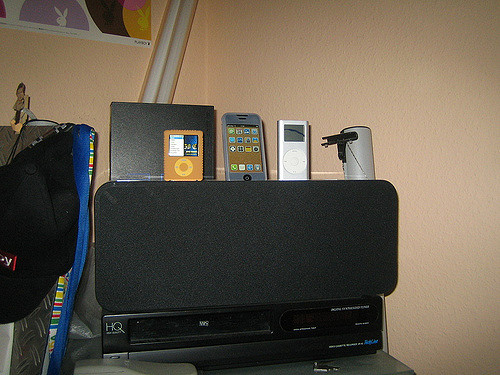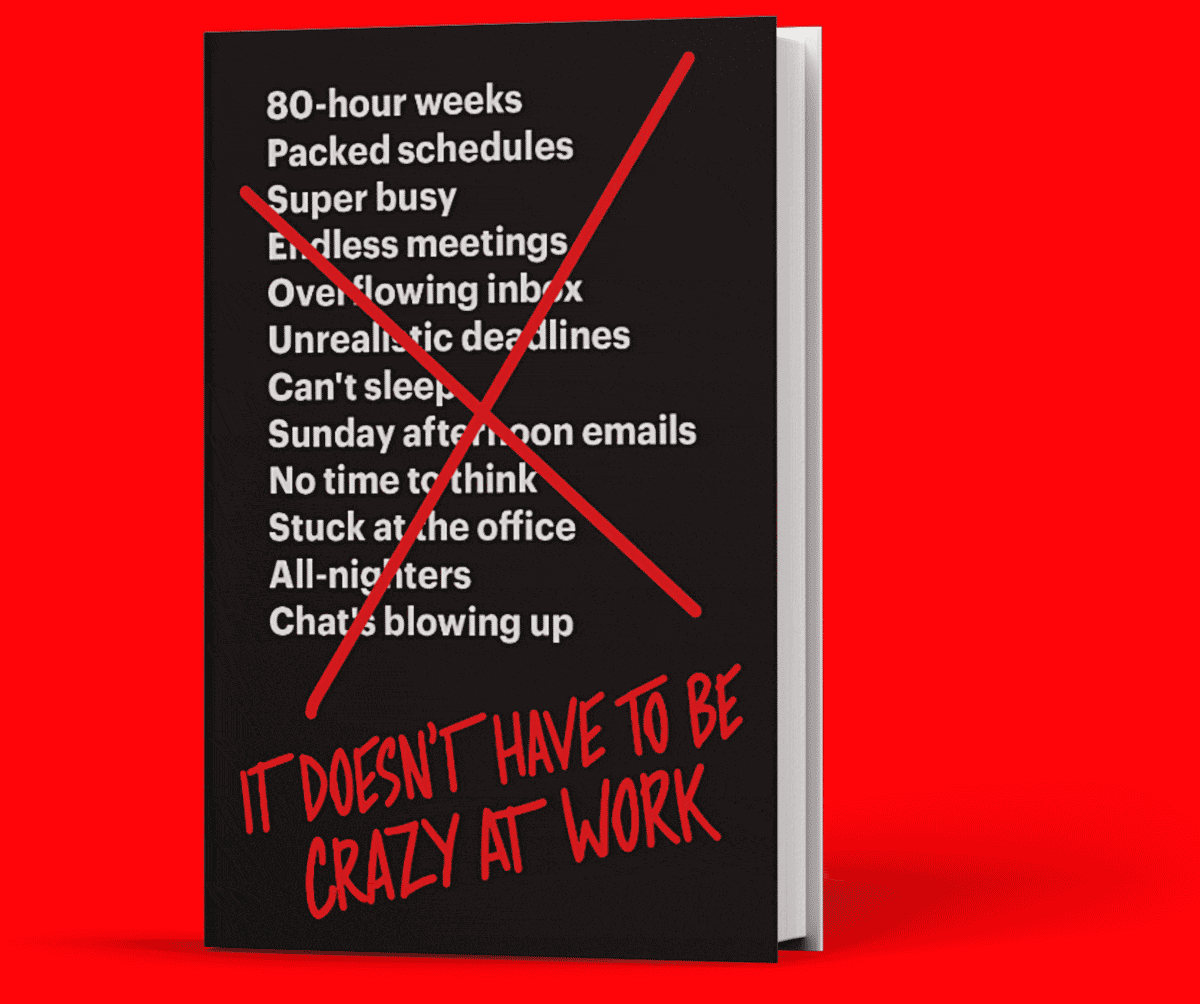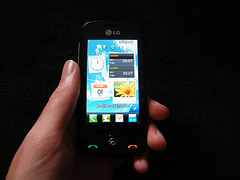|
|
|
Tuesday, March 3rd, 2020

It’s not just self-driving or any of the other “DDIY (don’t do it yourself) tech that isn’t ready for primetime.
It’s humans.
The National Transportation Safety Board said Tuesday that Tesla’s Autopilot driver assistance system was one of the probable causes of a fatal 2018 crash into a concrete barrier. In addition, the safety board said the driver was playing a mobile game while using Autopilot before the crash, and investigators also determined he was overly confident in Autopilot’s capabilities.
“Overly confident,” huh. Well, duh.
Who ever heard of a human who wasn’t, at the least, confident that the tech they spent their money, especially expensive tech, wouldn’t do what they expected.
“In this crash we saw an over-reliance on technology, we saw distraction, we saw a lack of policy prohibiting cell phone use while driving, and we saw infrastructure failures, which, when combined, led to this tragic loss,” NTSB chairman Robert Sumwalt said at the end of the hearing on Tuesday. “We urge Tesla to continue to work on improving their Autopilot technology and for NHTSA to fulfill its oversight responsibility to ensure that corrective action is taken where necessary. It’s time to stop enabling drivers in any partially automated vehicle to pretend that they have driverless cars.”
Even driverless cars tell drivers to stay alert, as do “Autopilot.”
Of course, doctors have been telling people to eat more veggies for decades and you know how well that’s worked.
Say the word “auto” to anyone and they will hear “you don’t have to do anything, X does it for you.”
Real pilots know better.
Image credit: Automobile Italia
Posted in Innovation, Personal Growth | No Comments »
Monday, July 1st, 2019

Poking through 13+ years of posts I find information that’s as useful now as when it was written.
Golden Oldies is a collection of the most relevant and timeless posts during that time.
Six years since I wrote this and it’s only gotten worse. More time spent on social media, more time spent staring at a screen as the world goes by. But if people don’t reengage soon, the world they knew will no longer exist.
Read other Golden Oldies here.
I had just finished unloading my cart at Home Depot the other day when a woman pulled up with her two young sons; when I offered her my cart she shook her head and kept walking.
There was a time when she might have offered to take the cart, but those times seem a part of the past.
Instead, she kept walking, talked to her sons and answered her cell phone.
Is the world really shrinking or is it just a narrowing of interactions and less interest in what’s around us in real-time?
The more distracted we become, and the more emphasis we place on speed at the expense of depth, the less likely and able we are to care.
Everyone wants his parent’s, or friend’s, or partner’s undivided attention — even if many of us, especially children, are getting used to far less. Simone Weil wrote, “Attention is the rarest and purest form of generosity.”
Each step “forward” has made it easier, just a little, to avoid the emotional work of being present, to convey information rather than humanity.
As usual, I am out of step.
I take back the carts, function beautifully sans cell/smartphone, pay attention to the humans in my orbit and love real-world interactions.
Digging in the dirt, conversation and reading (mostly cozy mystery fiction) are my favorite “time wasters;” no Facebook, Twitter or Candy Crush (my sister’s addiction).
I prefer to be connected to a few in the real world than connected to dozens (hundreds?) in the cyber world.
In short, I want to continue to pay attention and be present for whatever time I have left on this planet, whether decades or days.
Flickr image credit: Enzo Varriale
Posted in Culture, Personal Growth | No Comments »
Tuesday, November 27th, 2018

In the intro to yesterday’s post, about how boredom often triggers creativity, I referred to the hoops being jumped through to foster creativity in the workplace.
Unfortunately, it’s not working and that’s what to day’s post is about.
You may have noticed that creativity is all the rage—and not just among artists. American culture, and indeed the world, has become obsessed with manufacturing creative kids, who will turn into inventive workers, who will then become the innovative leaders we need in these rapidly-changing times. (…) As creativity is increasingly touted as the “premiere skill” of our time, [Diane] Senechal argues, there’s little interest in just letting this ability develop independently. Instead, it is being quantified, dissected and tested, taught and measured.
That approach may work on some talent, but developing creativity isn’t one of them.
In reality, that approach does more to destroy creativity than almost anything else.
The enormous number of major discoveries grounded in serendipity should be enough to convince people that structure and pressure don’t work.
If institutions really want to encourage creativity, in other words, they’ll have to develop the requisite patience to wait for it—and the ability to recognize what inventiveness is really made of. Insisting on innovation will never work, according to Senechal. “Perhaps the worst thing for creativity is dogma,” she argues. “Dogma delights in nothing; it insists on its own rigid ways.”
Of course, humans are notorious for believing they can improve any process by structuring it — even when it goes against research and proven results.
Bottom line, if you want your people to be more creative you need to let go, not hold on.
Image credit: Rigby Financial
Posted in Culture, Ducks In A Row, Personal Growth | No Comments »
Monday, November 26th, 2018

Poking through 11+ years of posts I find information that’s as useful now as when it was written.
Golden Oldies is a collection of the most relevant and timeless posts during that time.
Creativity and innovation are on every bosses’ mind and they do everything possible to create an environment and/or process to increase it — but it’s not working. In fact, as all those efforts are actually crippling creativity. Join me tomorrow for a look at what’s actually happening.
Read other Golden Oldies here.
Let’s start with a short personal quiz.
A. Do you consider yourself creative?
B. Do you
- love your iPad;
- wouldn’t be caught dead without your smartphone;
- can’t conceive of spending time without a music source;
- still follow TV shows, whether on TV or online;
- all of the above, often simultaneously?
What if B interferes or even cancels A?
What if the springboard for creativity and creative problem solving is boredom; a mind free of distractions that can wander untethered?
…a phenomenon that’s been identified by Edward de Bono, the legendary creative thinker. He calls it the “creative pause.” (…)The creative pause allows the space for your mind to drift, to imagine and to shift, opening it up to new ways of seeing.
From HBS’ Jim Heskett’s research question on deep thinking to my own comments on the value of silence, the need for undistracted time and the resulting creativity is well documented.
To be or not to be distracted is an individual free choice and can’t be dictated by others, but it is always wise to look at the consequences of one’s chosen actions.
Distracted driving kills people.
Distracted thinking kills creativity and innovation.
Image credit: MacintoshDo
Posted in Culture, Innovation | 1 Comment »
Tuesday, October 23rd, 2018

I, and dozens of others, have written on the negative and downright destructive effects from social media’s FOMO.
However, I hadn’t given any thought to the idea that it had invaded the workplace, too.
As if email [at work] wasn’t bad enough at cultivating FOMO, we now have a new generation of real-time tools like chat to stoke it. Yet another thing that asks for your continuous partial attention all day on the premise that you can’t miss out.
FOMO is just as detrimental at work as it is personally. It distracts, interrupts conversations, and destroys focus.
Basecamp noticed and not only created a solution, but also gave it a catchy, sharable name.
People should be missing out! Most people should miss out on most things most of the time. That’s what we try to encourage at my company, Basecamp. JOMO! The joy of missing out.
It’s JOMO that lets you turn off the firehose of information and chatter and interruptions to actually get the right shit done. It’s JOMO that lets you catch up on what happened today as a single summary email tomorrow morning rather than with a drip-drip-drip feed throughout the day.
Once again, Basecamp hits a homerun. (Two previous posts, here and here, talk about others.)
If you’re impressed with Basecamp’s ideas, you’ll not only enjoy It Doesn’t Have to Be Crazy at Work, by Basecamp co-founders Jason Fried and David Heinemeier Hansson, you’ll also find solutions you can use.
Image credit: Basecamp
Posted in Culture, Personal Growth, Role Models | No Comments »
Monday, August 13th, 2018

Poking through 11+ years of posts I find information that’s as useful now as when it was written.
Golden Oldies is a collection of the most relevant and timeless posts during that time.
In a world of Facebook/Twitter/WhatsApp/constant notifications/etc. knowing yourself is not high on people’s priority list. Partly, because it requires introspection sans distractions and partly because it is hard work and often uncomfortable. That said, it also provides the highest ROI of any action you may take.
Read other Golden Oldies here.
Do you equate leadership to influence?
Does being labeled an “influencer” by LinkedIn or other social media make you a leader?
Not really.
True leadership is internal.
It’s a function of your MAP (mindset, attitude, philosophy™).
It starts by knowing both yourself and your MAP.
Knowing yourself refers to knowing what you’ve done.
Knowing your MAP means knowing why you did it.
Knowing both allows you to accurately evaluate where you are and where you’re going.
That knowledge is the rudder with which you can chart and achieve any course you choose.
Image credit: Jevgenijs Slihto
Posted in Golden Oldies, Personal Growth | No Comments »
Thursday, June 29th, 2017

If you’re reading this I am making the assumption that you’re a knowledge worker. You may be in an office, a coffee shop, or perhaps some hillside retreat. Regardless of where you may be you have work to do and it needs to be done in a timely manner. When I am truly engrossed in something that has all my attention I get a hit of dopamine that channels my energy. Some call this flow.
Your brain is being fully maximized, distractions fade away and creativity takes place. When I am in this state it feels like work takes less effort. I am satisfied with the results and I feel accomplished. Truth be told I wish I could achieve this state more often and for longer periods of time.
As I was thinking about the concept of flow I was thinking how it could be applied to culture. If we are looking at flow in a way that reduces effort and gets faster results than perhaps we can apply that principle to culture as well.
I read a quote from Steve Jobs where he said, no one individual accomplishes something great, a team does. As I thought on that it occurred to me that the culture of Apple must be one where the team comes first, rather than the individual.
In my mind that is culture at work.
Any new hire would quickly see that belief in action, mimic it, and before they knew it they would assimilate without any conscious thought. That’s not a bad thing, since our brains have so many other things to worry about.
I think the same could be said of the military. You read stories of folks who did heroic things and their reasoning was that they didn’t want to let their team down. As a former Marine myself I can assure you that peer pressure is real and the last thing you want to do is let your buddies down. As a result you see some extraordinary actions on the part of service member, first responders and others. In my mind that is flow at work.
As always, though, we need to figure out how to iterate and expand our culture to a point where flow is achieved and it seems effortless.
I have found that surrounding yourself with folks that have passion for life, push themselves past their comfort zone, and care for others is a terrific foundation to achieve success.
Image credit: ReflectedSerendipity
Posted in Culture, Ryan's Journal | No Comments »
Tuesday, June 20th, 2017

I really enjoy the oddball columns in the New York Times, especially considering how depressing the news is these day.
There is a feature called Metropolitan Diary where people write short accounts of things that happen to them in their everyday life in the city.
A few days ago John Cunningham wrote about seeing celebrities daily during his lunch time.
His co-workers didn’t believe him, because they didn’t see any.
One day Tracey joined him to see if it was true. They walked to the corner and he asked if she had seen any yet.
She said no.
So he asked the guy standing next to her if he could shake his hand.
It was Henry Winkler.
Tracey didn’t see him, because she wasn’t paying attention — not mindful in today’s lingo.
I had a habit of looking into the face of every person who walked by me or stood next to me on the street, something that maybe most people did not do.
All this happened in 1988.
Before smartphones, before iPods, before all the distractions of our digital age.
I hope you remember this the next time you find yourself staring at your phone, instead of noticing the world through which you are moving.
Who knows who you might see or what adventures await you if you only notice.
Image credit: Skinny Casual Lover
Posted in Ducks In A Row, Personal Growth | No Comments »
Wednesday, February 22nd, 2017
 I, along with many others, have written about the need for mindfulness, the importance of quiet and the dangers of distraction and FOMO. I, along with many others, have written about the need for mindfulness, the importance of quiet and the dangers of distraction and FOMO.
Joe Hollier and Kai Tang sum it up nicely.
Solitude and boredom are essential to creativity or producing any sort of serious work. We are becoming scared of boredom, scared of solitude, scared of conversations with ourself.
They also believe in the value of boredom.
Capacity for boredom is at the root of observation. Observation inspires science, art, change, and opportunity. Have we become afraid of our inner lives? I think that we will find ourselves much happier when we are able to look forward to boredom, and to actually aspire for it, instead of being afraid of it.
But apparently there’s actually a market for a solution to providing the first two and reducing the dangers of the third.
A market to combat tech’s intentional effort to addict.
Being entrepreneurs, Hollier and Tang are going after that market, with a ‘back to the future’ solution.
It’s called the Light Phone and its tagline is “your phone away from phone.”
It’s beautiful, sexy and only makes calls.
And at only $150 it’s an affordable way to reenter the real world, rejoin the humane (not a typo) race and create the world in which you want to live.
Image credit: Light Phone
Posted in Business info | No Comments »
Monday, October 17th, 2016
It’s amazing to me, but looking back at more than a decade of writing I find posts that still impress, with information that is as useful now as when it was written.
Golden Oldies is a collection of what I consider some of the best posts during that time.
A couple of years ago I cited research that showed how the vagus nerve connects your brain to your heart and that, like muscles, it needs exercise to stay strong; screen time weakens that connection. I also predicted that the research would fall on deaf ears if it fell at all. Sometimes I hate when I’m right, so here it is again. Read it carefully, share it with all your friends and then plan your own vagus exercise routine.
Read other Golden Oldies here.
 People’s preoccupation with their screens has been blamed for many things and if you’ve been around someone who kept sneaking peeks while talking you know how annoying that is. People’s preoccupation with their screens has been blamed for many things and if you’ve been around someone who kept sneaking peeks while talking you know how annoying that is.
But did you know it messes up not only your brain, but also your capacity for connection, friendship, empathy, as well as your actual physical health?
Texting even messes up your infant’s future!
New parents may need to worry less about genetic testing and more about how their own actions — like texting while breast-feeding or otherwise paying more attention to their phone than their child — leave life-limiting fingerprints on their and their children’s gene expression.
It’s not just a case of being distracted.
Your vagus nerve connects your brain to your heart and how you handle your social connections affects the vagal tone, which, like muscle tone, can improve with exercise and that, in turn, increases the capacity for connection, friendship and empathy.
In short, the more attuned to others you become, the healthier you become, and vice versa. This mutual influence also explains how a lack of positive social contact diminishes people. Your heart’s capacity for friendship also obeys the biological law of “use it or lose it.” If you don’t regularly exercise your ability to connect face to face, you’ll eventually find yourself lacking some of the basic biological capacity to do so.
Do I think this research will actually make a difference in people’s actions?
No!
Even if the information becomes widespread I don’t think people would give up the instant gratification of being mentioned or conquer their FOMO and focus instead on quality face time.
It doesn’t seem a big deal right now, but look into the future at a world that doesn’t just lack connection and empathy, but is filled with people who aren’t even capable of it.
I’m glad I won’t be around.
One last item; a short essay that says better than I have in the past exactly why I don’t carry a cell phone. Enjoy!
Flickr image credit: Digitpedia Com
Posted in Communication, Golden Oldies, Personal Growth | No Comments »
|
 Subscribe to
Subscribe to
MAPping Company Success
About Miki 
Clarify your exec summary, website, etc.
Have a quick question or just want to chat? Feel free to write or call me at 360.335.8054
The 12 Ingredients of a Fillable Req
CheatSheet for InterviewERS
CheatSheet for InterviewEEs™
Give your mind a rest. Here are 4 quick ways to get rid of kinks, break a logjam or juice your creativity!
Creative mousing
Bubblewrap!
Animal innovation
Brain teaser
The latest disaster is here at home; donate to the East Coast recovery efforts now!
Text REDCROSS to 90999 to make a $10 donation or call 00.733.2767. $10 really really does make a difference and you'll never miss it.
And always donate what you can whenever you can
The following accept cash and in-kind donations: Doctors Without Borders, UNICEF, Red Cross, World Food Program, Save the Children
*/
?>About Miki
About KG
Clarify your exec summary, website, marketing collateral, etc.
Have a question or just want to chat @ no cost? Feel free to write
Download useful assistance now.
Entrepreneurs face difficulties that are hard for most people to imagine, let alone understand. You can find anonymous help and connections that do understand at 7 cups of tea.
Crises never end.
$10 really does make a difference and you’ll never miss it,
while $10 a month has exponential power.
Always donate what you can whenever you can.
The following accept cash and in-kind donations:
|















